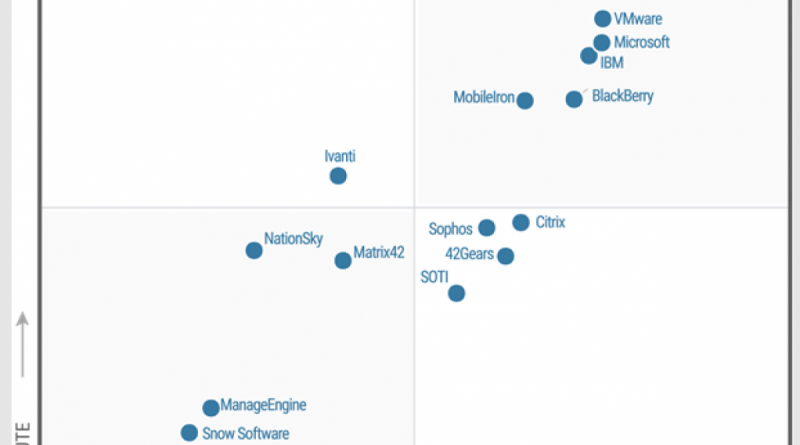Microsoft Emerges as a Leader in Gartner MQ for Unified Endpoint Management (UEM)
Earlier today, Gartner published their analysis of the Unified Endpoint Management (UEM) market, the Magic Quadrant for Unified Endpoint Management (UEM) Tools.
Im excited to announce that Microsoft is placed in the Leaders quadrant.

We believe, this is a fantastic recognition of our solutions, the massive engineering investments we made, but, even more so, it is a highlight of thousands of successful EMS deployments all over the world.
Over the past couple of years, I have blogged many times about two core things
1) The value of being deeply connected with customers, and
2) Why I feel the Microsoft teams are more customer connected than ever before.
This tightly knit customer connection has been a key part of our understanding of what customers need, where they are today, and where they want to go in the future.
Working with 1,000s of successful deployments has allowed us to learn and continue improving at a literally exponential rate.
Since the last 2017 Gartner Enterprise Mobility Management (EMM) MQ was published, we have added more than 10M new devices under Intune management. There are now more than 135M PCs and mobile devices being actively managed by ConfigMgr and Intune. THAT is Unified Device Management and that usage number is growing by more than 3M every month!
The Magic Quadrants are great resources when you want a snapshot today of the key providers and their innovations. This kind of view is important to many of the IT leaders I meet, but as they plan the future of their organizations in the 3-5 years, they look at more. In my opinion to best predict that far into the future, these leaders also consider the velocity and acceleration of the providers year over year, monitoring their evolution. Overlaying the last 3-4 Magic Quadrants (like UEM, for example) gives them a great view into how each provider is progressing over time.
The case of the UEM MQ is particularly interesting. Each year, of course, the requirements for each MQ changes a bit (e.g. changing from Mobile Device Management to Endpoint Mobile Management to Unified Endpoint Management), so, although the MQs are different, I think this evolution mirrors well the changes happening in the industry, as different categories converge and expand. This also often mirrors the evolving needs of the customers. Understanding how these categories are changing/shifting/converging over time is something every leader has to take the time to understand in order to effectively plan for the short-term and long-term.
When we do our own research and planning for what our customers will be needing in the next few years, we see a world with not only many more cloud services and mobile devices, but also a number of categories that have converged and integrated to deliver a Modern Workplace that is loved by users and trusted by IT. Specifically, solutions in Unified Endpoint Management, Identity and Access Management, and Endpoint Protection which will all need to be integrated in order to deliver the user empowerment, management, and security that is needed. I encourage you to look at all these Magic Quadrants in conjunction to make your decision. These solutions are on a convergence path, and even if you dont believe that, there is no question that all companies need them working tightly integrated.
Leaders making decisions about what to do right now (as well as in the future) need to look at the intersection of all of these and consider how they come together. Below you can see another Magic Quadrant; I think this expanded view helps us to see and understand how things are moving.

What you can see here matches the conversations I have with leaders from all over the world: The categories that are converging the fastest are Identity Protection and Endpoint Management and customers are looking for the best ways to ensure that only trusted users, using trusted devices, using trusted apps are given access to company data no matter where it rests (e.g. in the cloud or behind the firewall).
We continue to work hard to deeply integrate these cloud services in ways that will help you simplify while also increasing your security and all while delivering the empowering modern workplace that enables your users to unleash their creativity and teamwork.
You can read the in-depth analysis from Gartner here.
Disclaimer: This graphic was published by Gartner, Inc. as part of a larger research document and should be evaluated in the context of the entire document. The Gartner document is available upon request from [insert client name or reprint URL].
Gartner does not endorse any vendor, product or service depicted in its research publications, and does not advise technology users to select only those vendors with the highest ratings or other designation. Gartner research publications consist of the opinions of Gartner’s research organization and should not be construed as statements of fact. Gartner disclaims all warranties, expressed or implied, with respect to this research, including any warranties of merchantability or fitness for a particular purpose.
Source: EM+S Blog Feed
